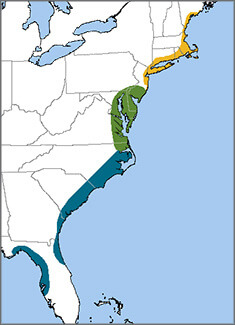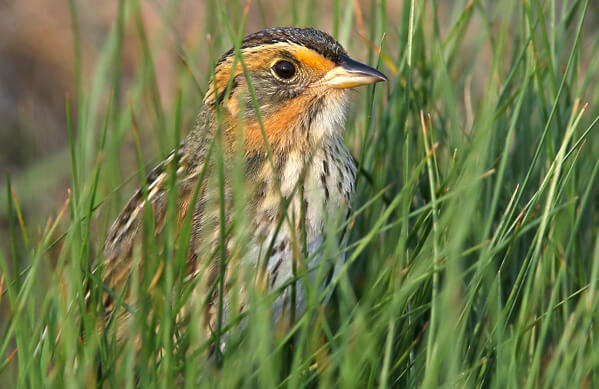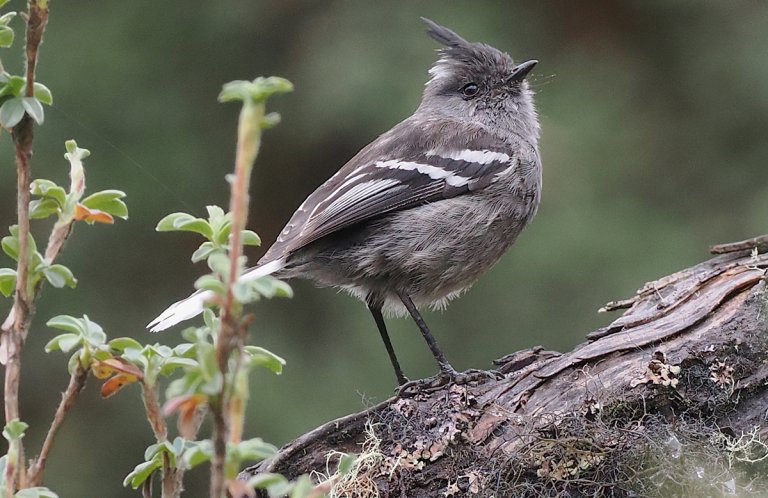
The Saltmarsh Sparrow's life is intimately connected to the tides. With a nesting cycle of 23 to 24 days, breeding is synchronized with the 28-day tidal cycle influenced by the moon.
The bird's marshy nest sites, built just above the high tide mark, are safe from flooding as long as the nesting cycle is completed between the twice-monthly high tides. Despite the tricky timing, this sparrow usually manages to raise two broods per season. Storms and more frequent high tides can lead to nest failures, though, with eggs and chicks washed away.
Still, the birds are well-adapted to life in the tidal zone. Saltmarsh Sparrows will repair their grassy nests, re-nest, and even retrieve eggs in response to flooding. In spite of these adaptations, Saltmarsh Sparrow is in trouble. The population declined more than 75 percent between 1990 and 2010. Without intensive conservation, scientists project that this sparrow will become extinct by 2050.
Climate change and associated sea-level rise are major concerns for this marsh-dwelling bird. Habitat loss has also taken a toll; the species now exists only in small, fragmented populations. As a result, Saltmarsh Sparrow was listed on the 2016 State of North America's Birds Watch List, and the U.S. Fish and Wildlife Service is reviewing whether the species should be listed under the Endangered Species Act.
A Whispered Song
The Saltmarsh Sparrow's bold facial pattern — gray cheeks edged by bright orange stripes — make the birds stand out in the habitat they share with Clapper Rail, Black-necked Stilt, Osprey and other species. Unlike more boisterous sparrows like the Sagebrush Sparrow, the Saltmarsh Sparrow sings a quiet, whisper-like song, and its secretive habitats make it difficult to observe.

Saltmarsh Sparrow by Betty Rizzotti
Saltmarsh Sparrow and the closely-related Nelson's Sparrow were once thought to be a single species, the Sharp-tailed Sparrow. The American Ornithologist's Union formally split the species in 1995 based on song, habitat, and morphology. However, the Saltmarsh Sparrow retained the name caudacutus, which is Latin for "sharp-tailed."
Marsh Madness
Male Saltmarsh Sparrows don't defend a nesting territory; instead, they occupy large, often overlapping, home ranges and mate with any females that enter. Females also rove around and mate with many different males. The male's only investment in offspring is his genetic material. Females raise their young alone, and most broods have mixed parentage.
This promiscuous mating system, where no pair bond is formed, is shared by North American hummingbird species, such as Ruby-throated, Rufous, and Costa's.
Donate to support ABC's conservation mission!



















































